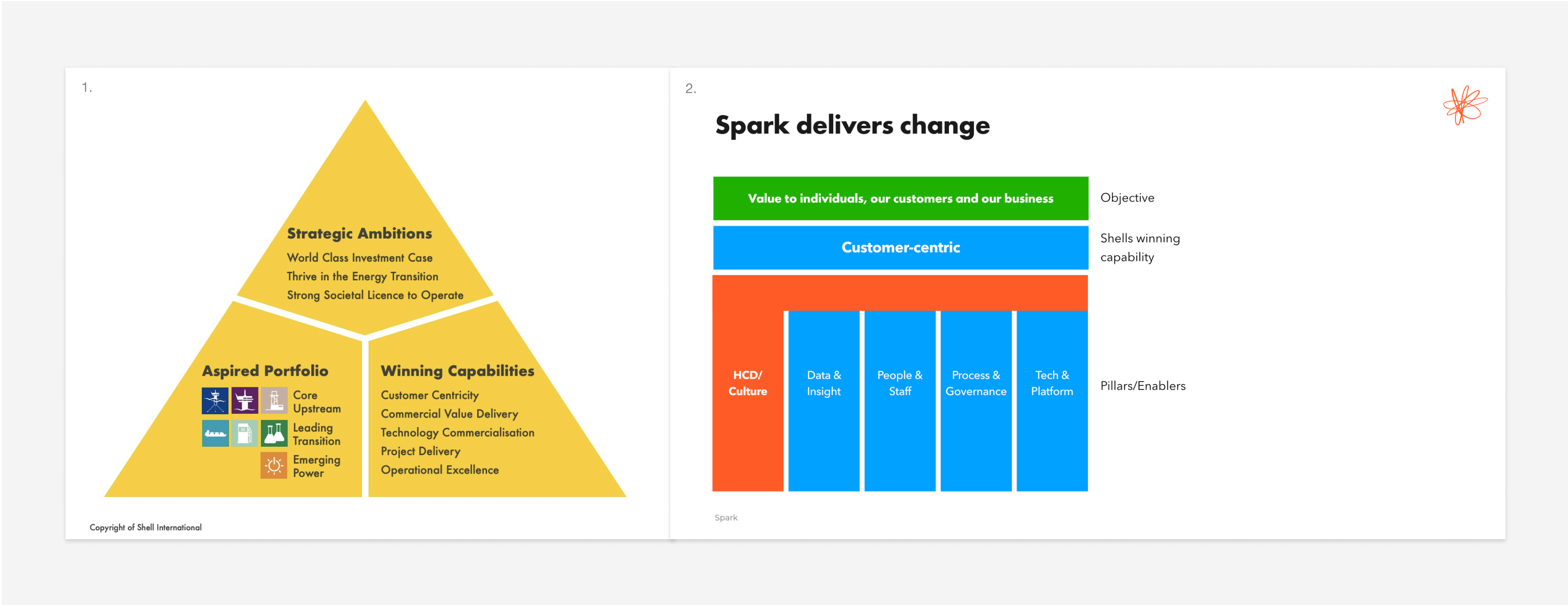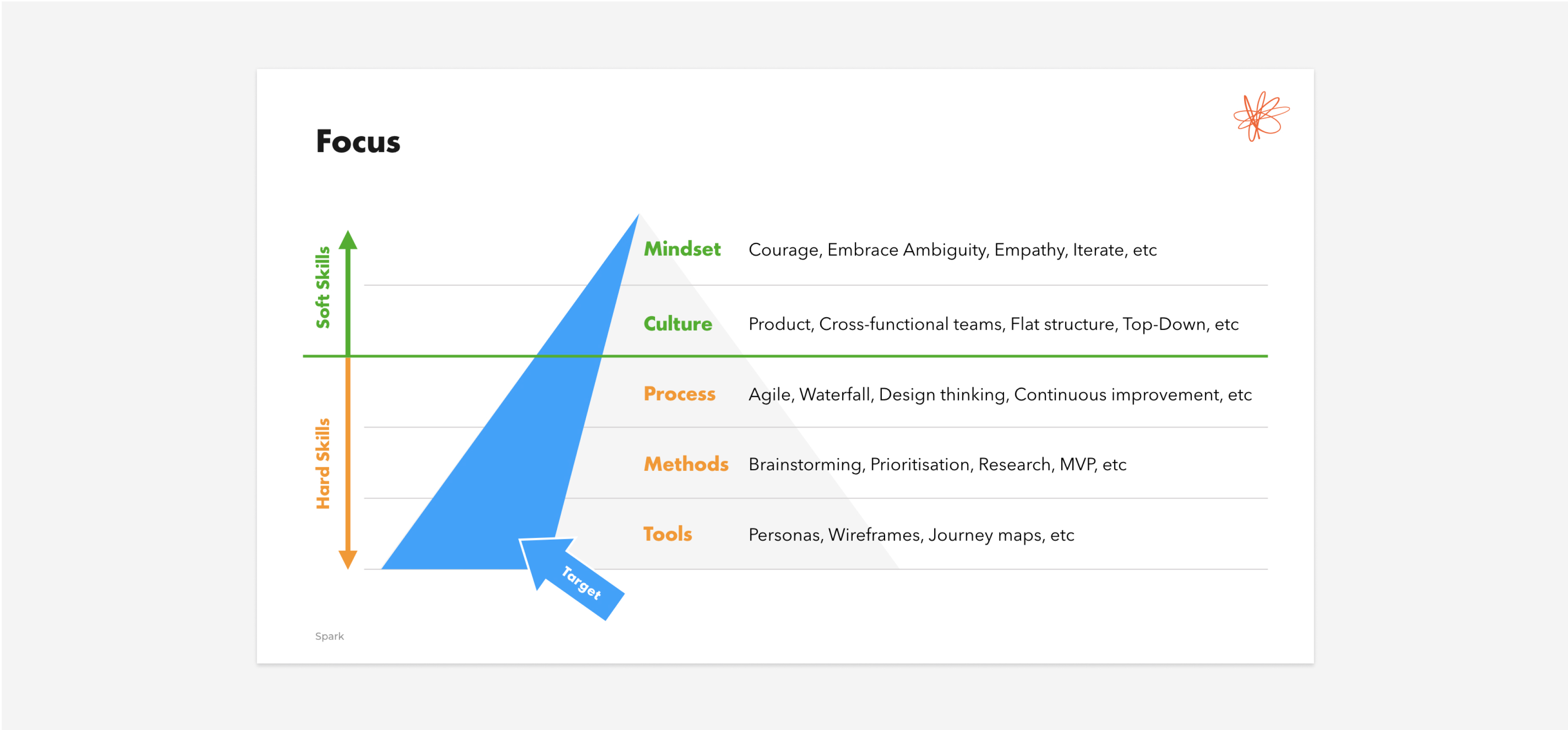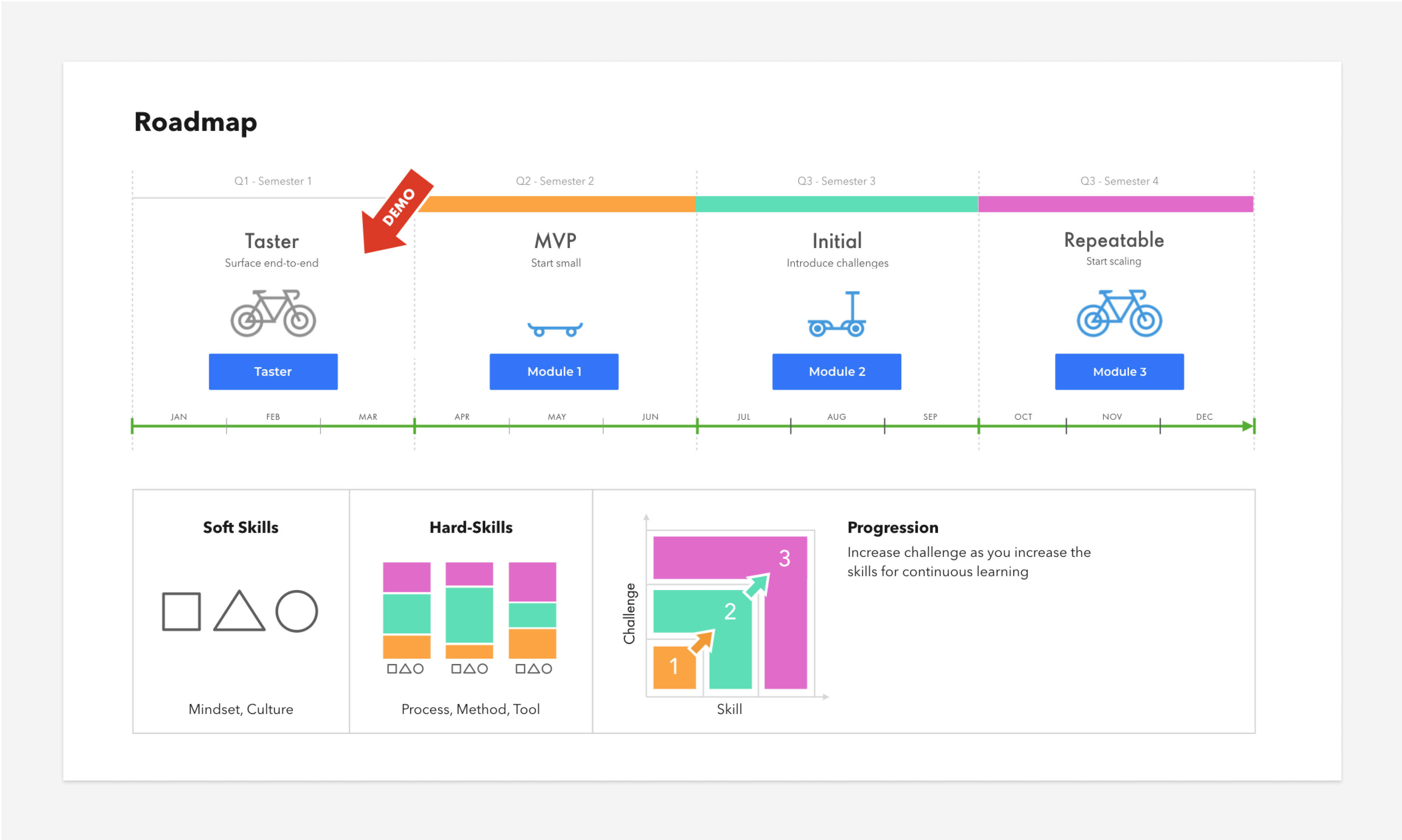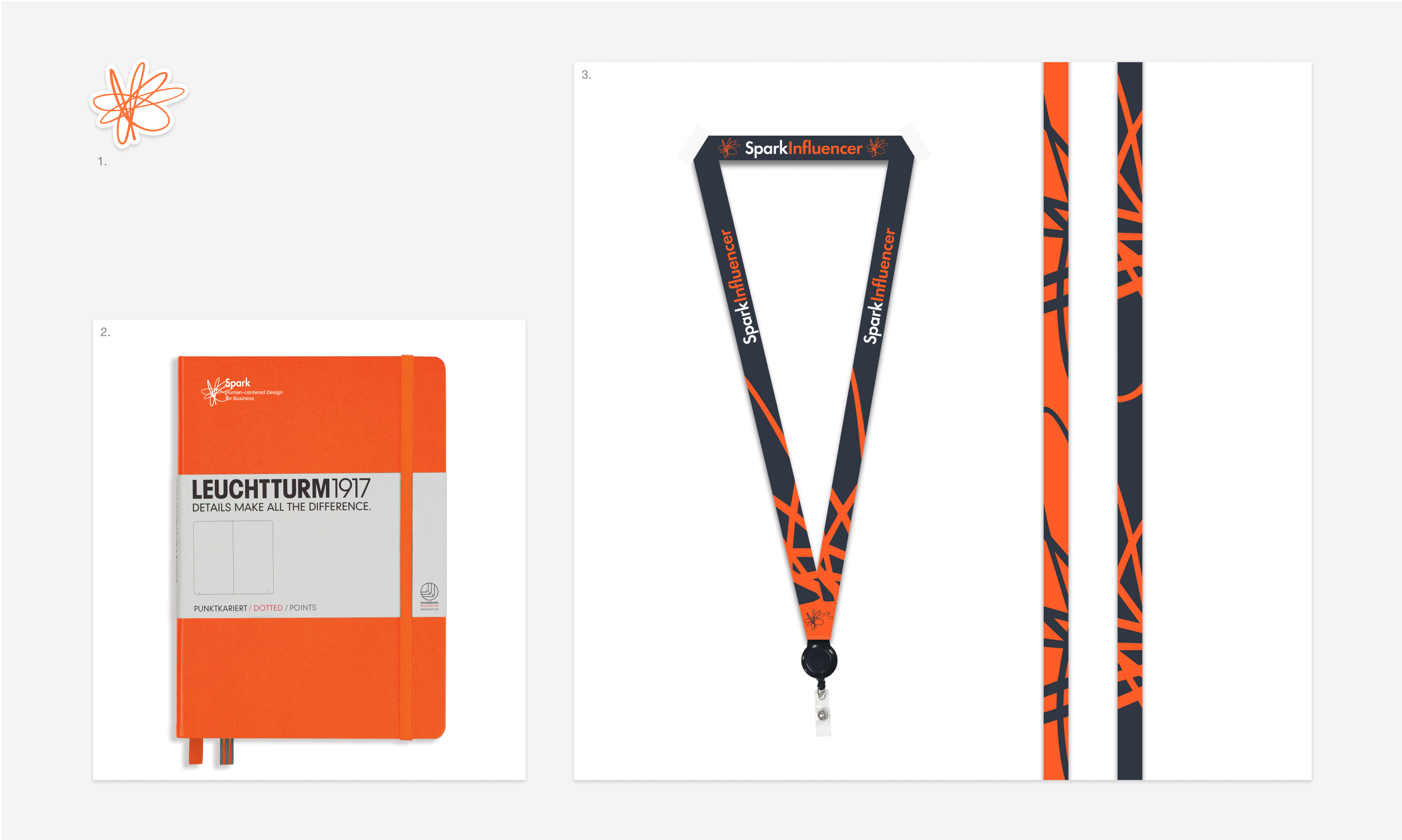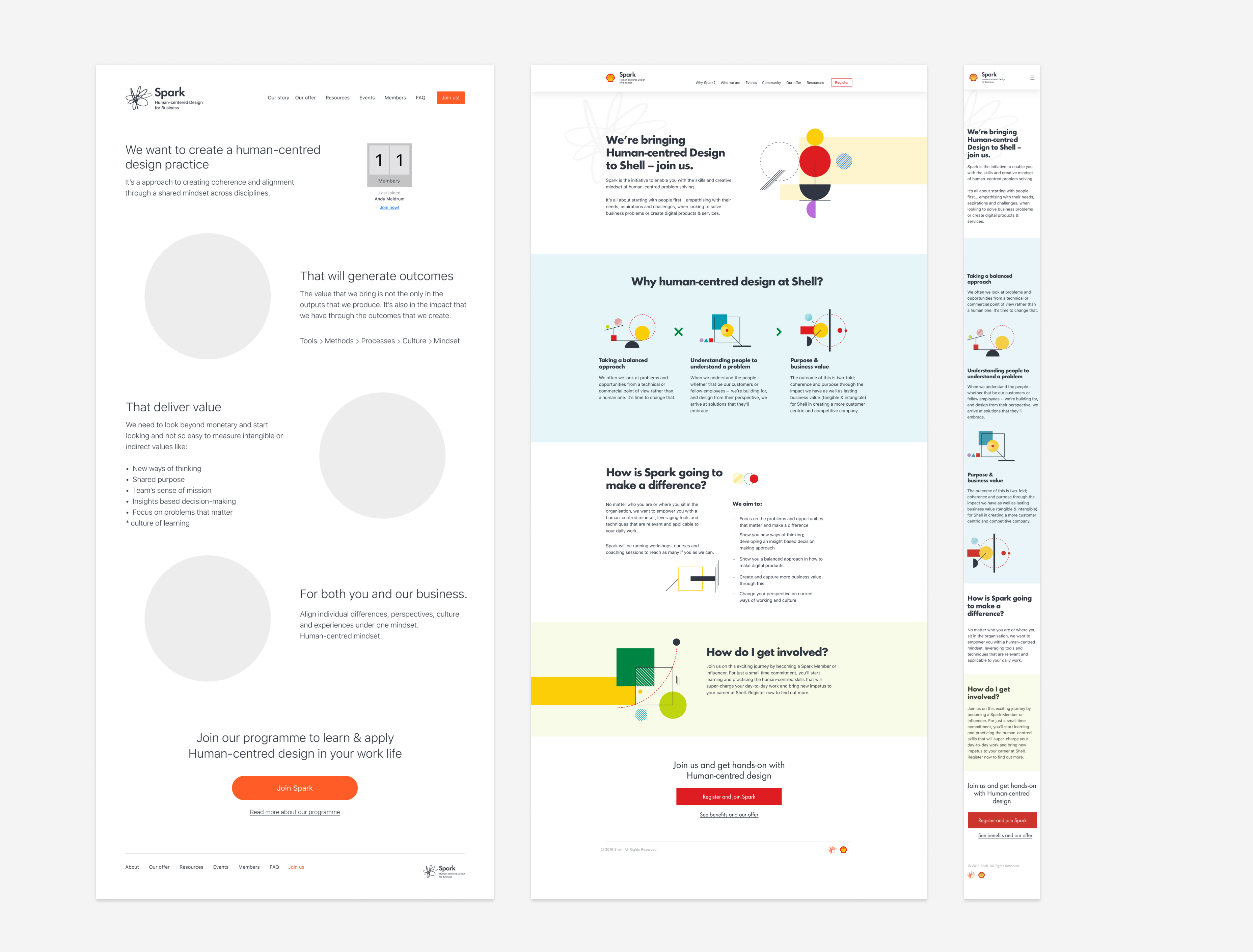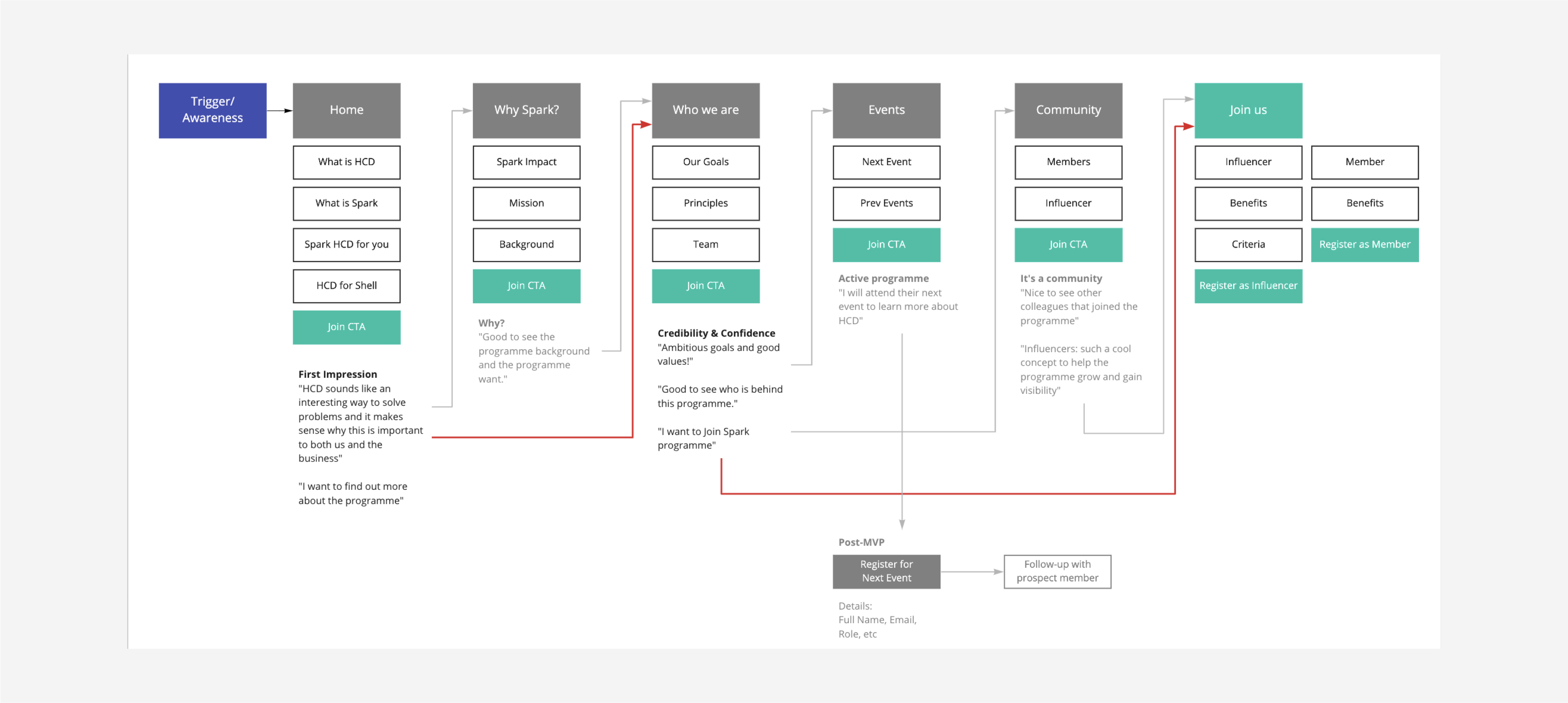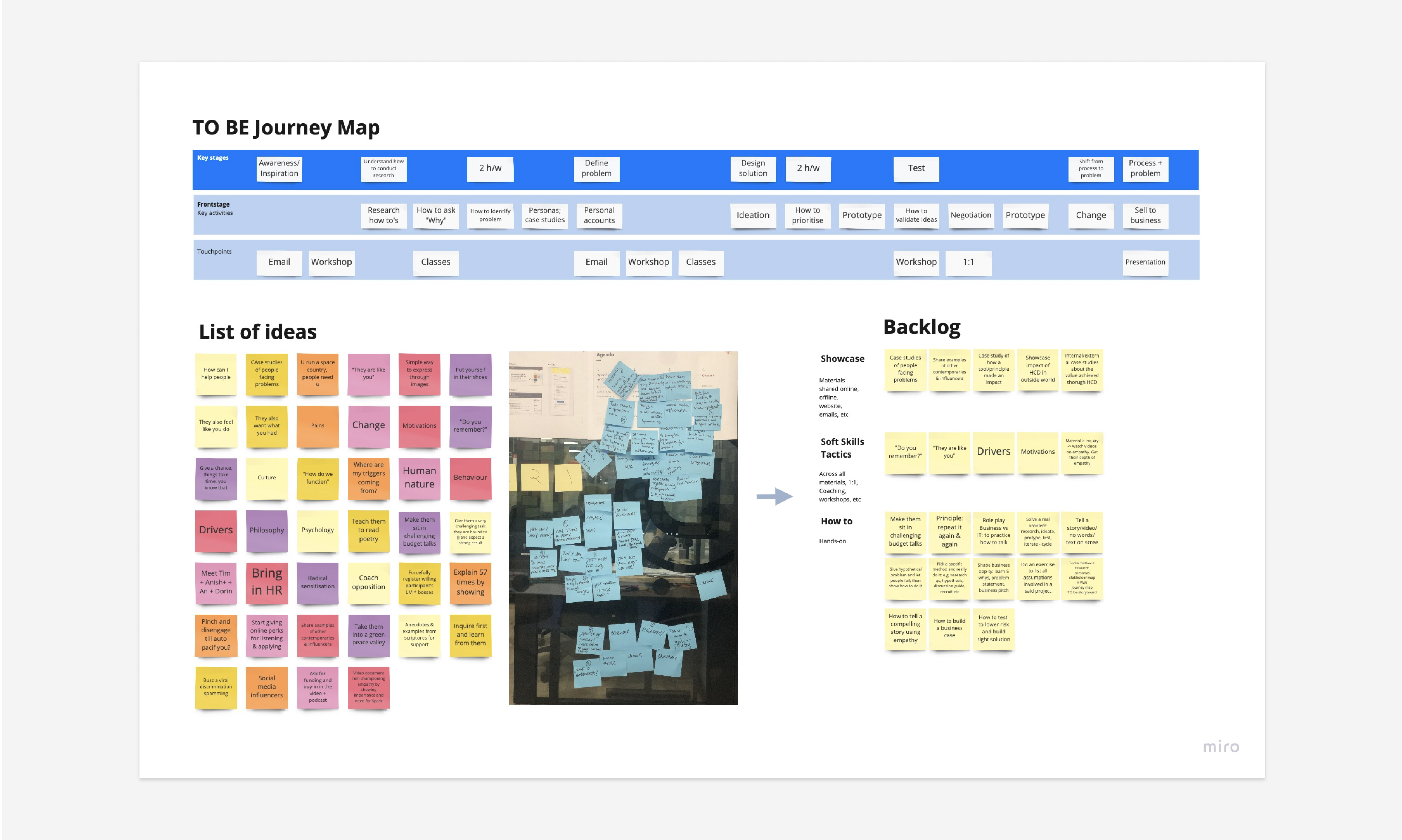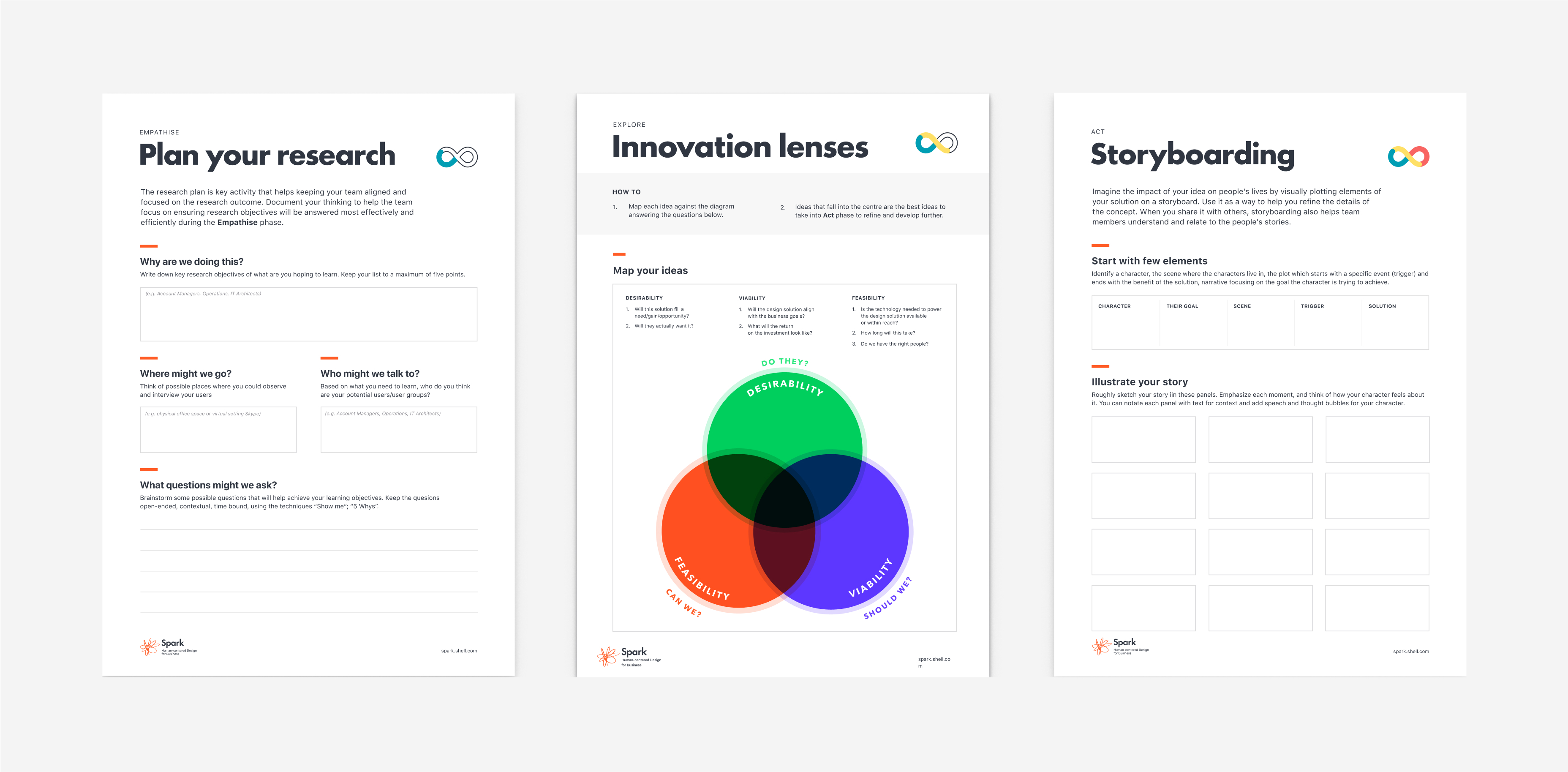Driving change through Human-centred design
OPPORTUNITY
Many Shell digital products fail to yield expected business outcomes due to team’s lack of understanding of the customer and user needs. We had an opportunity to educate Shell teams about human-centred approach to problem solving.
SOLUTION
I co-created Shell bespoke up-skilling program - Spark, human-centred design for Business. Our goal is to up-skill 4,000 Shell IT staff with the skills and mindset of human-centred approach to problem-solving.
OUTCOME
We managed to build an active community of 20 early adopters, created new tools, framework and mindset to support organisational cultural shift towards the product-driven organisation.
Design
"How might we bring a human-centred approach to problem-solving in Shell?"
To truly understand the challenge, I held semi-structured interviews with four business leaders across HR and IT. My main question was: "Why does Shell care about human-centred design?".
I learnt that Shell leaders see growing human-centred design as imperative to the company's survival long term. As a result, our team positioned Spark under Shell’s winning capability.
MY ROLE
- Research
- Business strategy
- Branding
- UX/UI Design
- Communications
PROCESS FOLLOWED
- Discovery
- Roadmap
- Branding
- Ideation
- Hypothesis
- Design
- Testing
- Outcome
We aligned Spark goals to Shell strategic vision to become customer centric organisation. 1. Shell strategy; 2. Spark positioning in the business context
With the strategic lens in mind, we createda balanced Spark offering - from giving practical tools to changing culture and mindset.
Spark balanced offering consist of hard skills training (tools, methods, process) and soft skills trainings (mindset and culture).
From strategy to roadmap
To achieve a global scale, we had to create a self-sustaining program. I co-designed a four-module learning program that defined Spark roadmap. The outcome we hope to achieve upon completing the program, 20% of trained IT professionals would become Human-centred Design Practitioners who will be able to take others on the same journey of learning.
Spark one-year roadmap is made up of four modules that up-skills participants to become human-centred design practitioners.
User research
To remove my own biases, I've picked a diverse group of eight Shell members for 1:1 contextual interview. I aimed to understand their deep aspirations for Spark by centering the discussion guide around one question: "How does your ideal learning experience look like?". I synthesised interviews down to Spark participants’ two primary needs:
- 1. Visible leadership support
- 2. Practical skills to apply in their job
Branding
"How might we create visible leadership support for Spark participants?"
Visibility stems from recognition, recognition - from identity. We decided to tackle the challenge from the perspective of a brand. Spark brand needed to be both corporate yet personal, serious yet warm, fresh yet recognisable.
I crafted the logo, colours, and tone of voice to reflect Spark’s personality.
Spark primary colors (left); my hand-drawn logo reflecting organic nature of human-centred design (right).
To create visible leadership support, we asked our sponsors to stand by Spark's mission in everything they do, including wearing Spark brand - lanyards, stickers, and notebook.
Spark branded assets - 1. Sticky, 2. Notebook, and 3. Lanyards
We further reinforced the credibility behind our brand through various communication channels: emails, Yammer and website. I created a wesbite sitemap and information architecture that helped me build low fidelity wireframe and co-design high fidelity responsive website.
Spark website wireframe, final design and mobile
>
Spark sitemap
Ideation
Our next challenge: "How might we create the learning experience that equips members with practical human-centred design skills?".
I led the ideation workshop of ten designers and Shell members, where participants came up with three very different directions for the program experience and 100+ ideas to deliver it. I synthesised workshop outcomes into the To Be Journey map and prioritised the list of ideas into the backlog to form MVP.
TO BE Journey Map, prioritised the list of ideas and MVP backlog.
Hypothesis
To test the product-market fit, we decided to run one-day Taster Workshop - a high-level overview for participants to get a taste of the Spark program.
I formed key hypothesis: "Spark offers participants practical human-centred design skills to apply in their day jobs. We know we are right if at least 60% of people felt workshop learnings are "applicable" to their day-to-day.”
Design
I crafted learning content with the Shell context in mind. Shell bespoke loop aims at guiding teams through human-centred approach to problem-solving. To give members tangible takeaways, I have written and designed Spark Cards and Templates to prompt participants to apply Human-centred Design methods in their daily challenges.
Spark Method Cards gives participants a summary of how to use each human-centred design method in practice.
Spark Templates gives participants a summary of how to use each human-centred design method in practice.
Testing
On the day of the Taster Workshop, Spark participants were fully engaged! Both the Spark team and participants learnt a lot from each other as we were actively asking questions and sharing personal experiences.

Spark Coach welcoming participants at the Taster Workshop (left); me running the Ideation workshop (right).
Outcome
Key business outcomes of this experiments are:
- 1. Product-market fit: 80% of members scored their learnings as "applicable" on the workshop survey. Our key hypothesis proved to be correct: "Spark offers practical skills for participants to apply in their job."
- 2. The program offers: Members found learning materials extremely practical as they used both physical and digital prompt cards and templates to solve their day-to-day challenges.
- 3. Barriers to entry: most participants found it hard to commit the whole day for learning. Hence we decided to run our future sessions in shorter modules to help participants fit the learning in their busy schedules.
My key learning
I realised how important it is to invest enough time in strategic thinking before running deep into the project delivery. Only with a clear purpose and intent would you and your team have confidence in executing the tactics.

